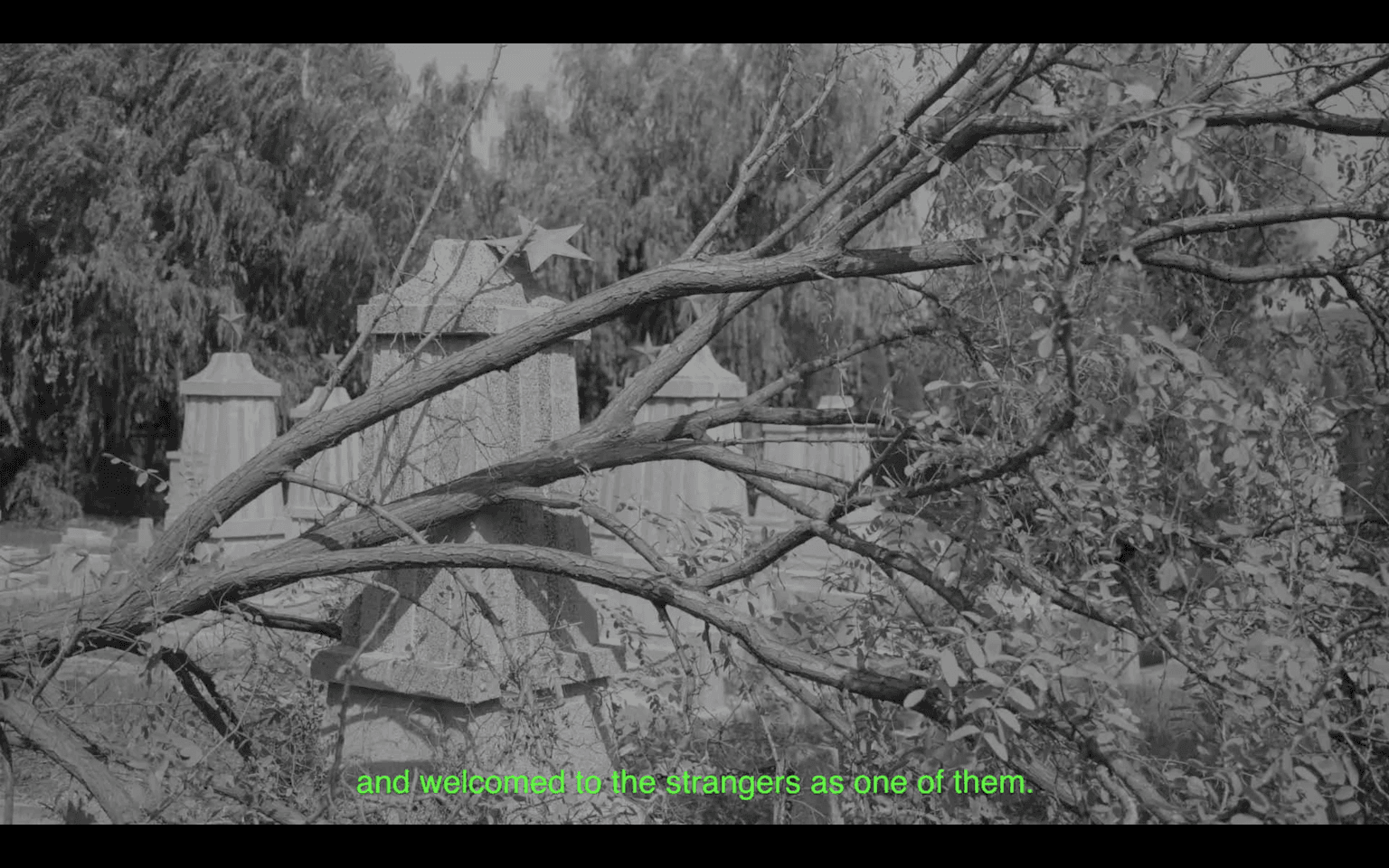Proposal for Public Assembly/Encounter為公共集會(邂逅)的提案
‘Assembly’ and ‘encounter’ constitute publicity that situates in a kind of ‘grey area’ – a planned or improvising gathering or even a personal encounter. Encounters constitute our public life today. The formation of this ‘public sphere’ exists not only in physical space but also in the flow of images. Interested in examining the relationship between image and memory in the post- revolutionary era, the artist researches the history of a collective and revolutionary square (a socialist heritage) in his home city‘D.’ He brings up questions such as whether personal memory can be used as archives in a historical narrative? How images and memory are manipulated by those in power and how we choose to view them, how the public sphere is depoliticized and how the public becomes a ‘phantom’.
In the construction of the official image of city ‘D’, its social image undergoes a process of transformation from ‘colonial hell’, ‘socialist paradise’ to ‘neo-liberal economy’ – It is an intermediate state between political seriousness, identity, mass entertainment, and consumerism. This also offers a certain performativity for the image. This performativity shapes but also dismantles the collective identity and public life of citizens in the temporal dimension that connects the history and the future.
By ‘touching’ a macro-history with the cinematic lens and transforming it into a micro-observation in a semi-fictional way, the viewer has the dislocation and illusion of moving between different social, geographical and cultural images. The “dislocated” and “de-territorialized” appropriation is also in line with the way contemporary images are produced, in a hybrid and heterogeneous state. In the artist’s view this approach reveals ‘the skin of the object’, ‘the skin of history’ and ‘the skin of the film’.
“集會”和“邂逅”構成了一種處於“灰色地帶”的公共性 – 一種被組織的或偶然的聚集甚至是個人偶遇構成了我們當今的公共生活。這種 “公共領域”的形成不僅存在於物理空間 , 也像存在於圖像流動之中。出於對後革命時期圖像和記憶關係的興趣,藝術家調研了家鄉 D 市的一個具有集體和革命意義的廣場的歷史 , 探討了圖像 ( 公共、集體和個人圖像 ) 以及記憶 ( 記憶可否作為檔案 ) 如何被當權者操縱 以及我們如何選擇觀看 , 公共領域如何被去政治化並且公眾何以成為一種“幻影”。
在D市官方的形象建設中,它的社會圖像經歷了從“殖民地獄”“,社會主義天堂”到“市場經濟”的轉變過程 – 一種介於政治嚴肅性、群體認同、 大眾娛樂和消費主義的中間狀態。這也為圖像提供了某種表演性的可能。這種表演性在連接過去與未來的時間維度上 , 塑造但同時也 瓦解著城市居住者的群體認同和公共生活。
用鏡頭“觸摸”一段宏觀的歷史並以半虛構的方式將其轉化為微觀的觀察 , 觀眾有種在不同的社會、地緣和文化圖像間穿梭的錯位和錯覺 – 在藝術家看來這層層揭開的是“物體的皮膚”、“歷史的皮膚”、“電影的皮膚”(Laura U. Marks)。 “錯位的”、“去地域的”挪用也恰恰符合當代 圖像生成的方式 , 是一種混雜的、異質的狀態。
about the artist /
Hu Wei (b.1989, Dalian, China) lives and works in Beijing, graduated from CAFA and obtained an MA at Dutch Art Institute (DAI) in NL in 2016. He works in a variety of media, including film making, installation, printed images, performance and drawing. His interest often begins with the seemingly unrelated elements between text and visual culture, exploring the multiple, speculative connections between art and reality in relation to both political and formal level through research, “translation” and imagination. His recent practice travels through different geo-contexts and “silencing” histories and materials, investigating the dynamics, fragmentation and synthetic alienation of human, non-human and material in the process of historical and natural transformation. Combined with moving image and essayistic aesthetics, his works also unfold the precarious relationship between invisible labor, affect, and value judgments in different political and economic environments.
vmac archived / artworks from the artist
All copyright reserved by the artist. 作品版權歸藝術家所有。
For enquires, please contact [email protected]
